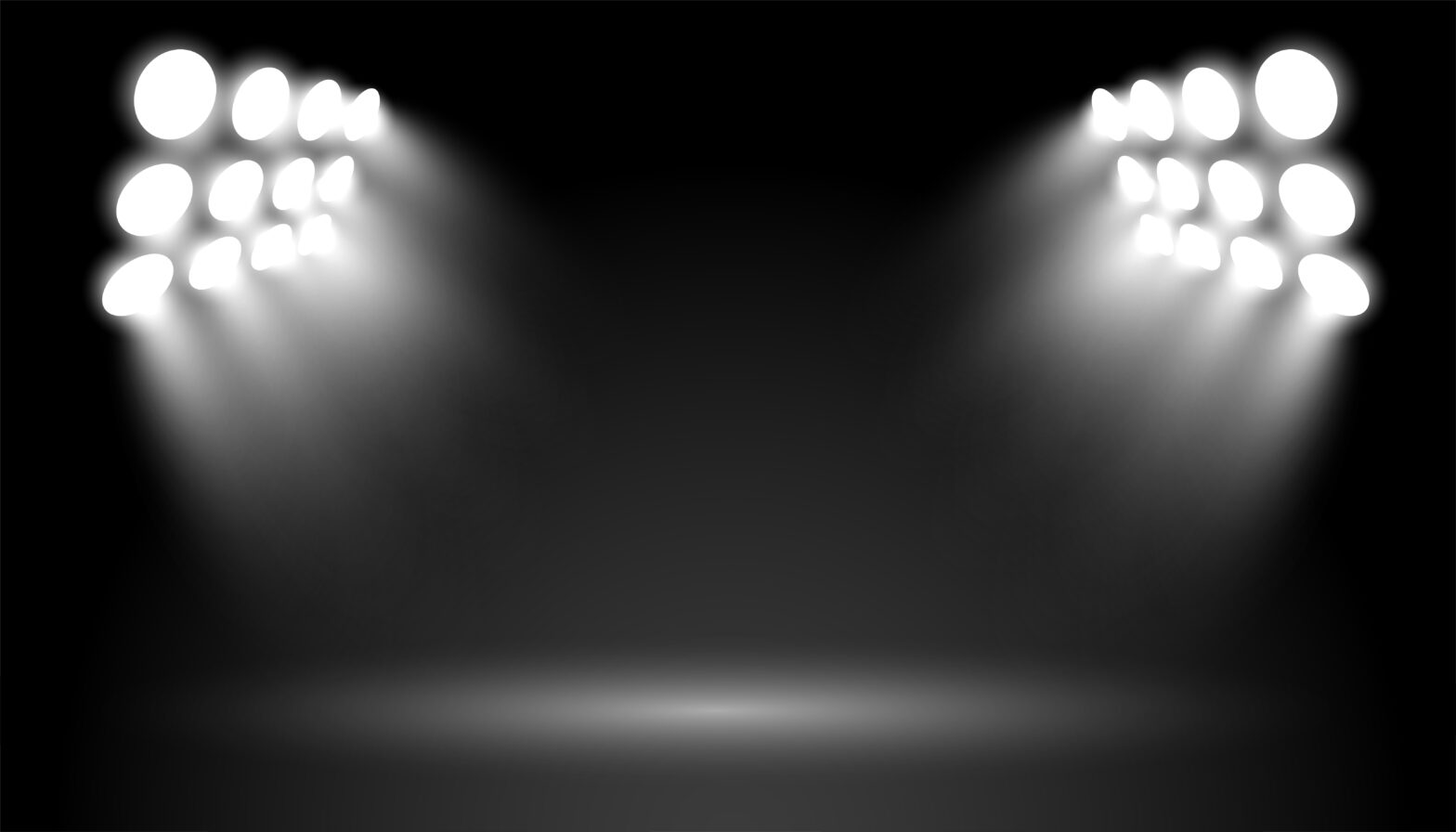Introduction
Over time, lighting equipment units and arrangements have undergone significant evolution. LEDs have replaced the conventional CFL lamps. Sensors now enable the automatic operation of various lighting infrastructures, ensuring eco-friendliness and optimised energy consumption. Floodlights also belong to this new generation of light sources. Unlike the regular ones found in the market, these are designed for broad-scale illumination. That’s why you will find them used primarily on sports stadiums, event venues, construction sites, and residential parks.
What is a floodlight?
From the above description, you do have a brief idea about what floodlights are. However, let us provide you with a deeper insight to enhance your understanding. These are broad-beamed artificial lights that can illuminate both large indoor and outdoor areas. Their arrangements are meticulously planned to ensure that all the lamps combinedly can cast a wide beam with high intensity. Hence, visibility is significantly enhanced.
How do floodlights work?
Engineered optics and powerful light sources come together to make the floodlights functional. Here’s a brief of their working mechanisms.
- Right at the core, you will find a bulb with extremely high lumens compared to other lighting systems. It can be a halogen lamp, an LED light, or a metal halide lamp. Its prime function is to ensure the light rays emitted are intense and strong.
- A reflector is placed right at the path of the beam, usually made up of polished aluminium. It creates an enclosure around the bulb, allowing all light rays to be incident directly on its surface. Thanks to the reflecting properties, it amplifies and directs the beam outwards.
- To create more divergence and give a funnel shape to the reflected light rays, a diffuser or lens will be placed. It adjusts the beam angle to ensure an even and consistent illumination.
In modern-day floodlights, built-in cooling systems or heat sinks are added. These distribute the heat energy generated from the bulb, ensuring maximum longevity and less power consumption.
Types of floodlights
Solar
Whether it’s to create a remote lighting infrastructure or illuminate parks and gardens, solar lights are your go-to option. Reinforced with multiple photovoltaic panels, these capture and convert the solar energy into electricity throughout the day. This is then used to charge the internal battery, which ultimately helps illuminate the area during nighttime. Most solar lights can be controlled remotely, using intelligent systems, thereby allowing automatic switch-on and off operations.
LED
Most modern-day floodlights come with an LED bulb inside. It is known for its exceptionally high longevity, as premium-quality products often last for years to come. To top it off, the semiconductor circuits used inside don’t consume too much electricity, even when used for long hours. Thanks to the even and brighter illumination, these types of floodlights can be used across residential, commercial, and industrial areas.
Halogen
These come with a tungsten filament and a halogen gaseous mixture inside the enclosure. When power is applied across the terminals, the gas molecules vibrate, producing warm, bright light. Although they are less energy efficient compared to LEDs, they offer a stellar colour rendering property. Due to this, they can be used for temporary setups in residential and commercial sectors, where the initial upfront costs will be low.
HID
Known as High Intensity Discharge lights, these variants are equipped with metal halide and extremely powerful sodium lamps. They have comparatively high lumen output, meaning the light rays emitted are pretty bright. However, they require more warm-up time and are less energy-efficient compared to LEDs. Due to this, they are primarily used in industrial complexes, sports arenas, and large outdoor areas where bright illumination is the top priority.
Common applications of floodlights
Now that we have discussed what floodlights are, let’s have a quick look at their applications to get a clearer picture. With this, you can instantly decide whether these will suffice your requirements or not.
- They illuminate driveways, entry points, and large-scale perimeters to deter trespassers. To top it off, they also improve the visibility for surveillance cameras.
- Halogens and HIDs are often used at various outdoor events, such as fairs, concerts, and festivals. They generate bright beams to ensure the safety of the vast crowds and maintain proper visibility of the podiums.
- When positioned at right angles, these emit high-intensity beams with wider angles, ideal for sports arenas, fields, and stadiums. Hence, players and the audience won’t have to worry about nighttime visibility.
- High-intensity discharge setups can be found chiefly in factories, construction sites, warehouses, and other industrial areas. They guarantee workplace safety, even in low-light conditions.
- LED and halogen floodlights of different colours can be used to make the architectural features appear more prominent to the onlookers.
Benefits of using floodlights
- Outdoor areas, such as parking lots and construction sites, have almost negligible visibility, especially after sunset. That’s why floodlights are often used because they are capable of creating broad-scale illumination with high intensity.
- Solar and LED variants are known for extended operational lifetime. They do not need repairs or replacements too often. What’s more, you can significantly cut down the maintenance costs, thanks to the modern electrical circuits used.
- CCTV and surveillance systems can function better. It becomes easier to monitor the perimeters and prevent vandalism or theft with floodlights, all thanks to their bright illumination.
- Most products come with a durable, weather-resistant housing. Hence, they won’t suffer from any damage or misfiring circuit when exposed to the external environment.
- Unlike traditional lights, LED and solar variants consume much less power. As a result, you will achieve excellent brightness at a minimal cost, thanks to reduced utility bills.
- Modern floodlights do not require warm-up time. In other words, they can light up the areas instantly once switched on.
Factors to consider when choosing floodlights
Worried about not making the right selection? Here’s what you need to look for to get the best floodlights.
- The lumen rating should align with the area to be illuminated. The larger the space to be lit up, the higher the lumen output.
- Wider beam angles will help illuminate larger areas and vice versa.
- You can choose floodlights based on the power source available. Options include solar, electric, and battery-powered.
- Minimal energy consumption is only possible with the LED variants.
- Check the colour temperature to set the right mood and maintain enough visibility in the surroundings.
- Floodlights with poles and brackets offer flexibility in installation.
Comparison of floodlight types
Type |
Efficiency |
Common uses |
Lifespan |
Initial cost |
|
LED |
Very high, 80% to 90% |
Outdoor security, sports arenas, residential perimeters |
30,000 to 50,000 hours |
Moderate to high |
|
Halogen |
Low, 20% to 30% |
Indoor events and temporary setups |
2,000 to 4,000 hours |
Low |
|
HID |
Medium, 40% to 60% |
Sports fields, industrial complexes |
10,000 to 24,000 hours |
Moderate |
|
Solar |
High, 60% to 80% |
Remote locations, gardens, parks |
15,000 to 30,000 hours |
Moderate |
Pros and cons of floodlights
Pros
- Wide area coverage
- Highly durable with weatherproof and anti-corrosive housing
- High brightness for low-light conditions
- Instant lighting with minimal to no warm-up time
Cons
- High upfront costs for solar and LED variants
- Complex setup
- Light pollution
- High heat generation
Installation of floodlights: The best practices to be considered
- All the lights need to be placed at an elevated point so as to reduce the glare and maximise the area coverage.
- An appropriate lumen rating will ensure minimal light pollution and no excessive brightness, which would otherwise interfere with visibility.
- Tilting the light at a 45-degree angle in the downward direction will prevent light spill and direct glare.
- When it needs to be installed outdoors, the wiring should be weatherproof and IP65 certified or higher.
- The floodlights’ power wattage should be less than the maximum voltage threshold of the source. This will prevent circuit overloading.
Conclusion
Floodlights may appear larger than traditional ones, but their brightness and wide beam angles make them the clear winner in this comparison. Their versatility has expanded the applications to include residential, commercial, and industrial purposes. However, you must ensure that the products you choose have the correct lumen rating, consume less electricity, and can last for a long time. Only then can you ensure the maximum return on your investment.

